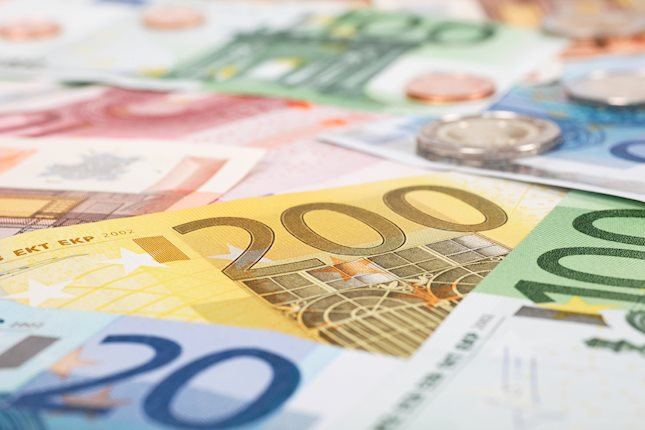- GBP/JPY may appreciate as the BoE leans toward a gradual approach to policy easing.
- The Pound Sterling may gain ground as BoE officials support following a gradual policy-easing approach.
- The likelihood of a BoJ’s 25 basis point hike in December rose to nearly 60%, against 50% a week ago.
The GBP/JPY pair snaps its five-day losing streak, trading near 191.90 during Asian trading hours on Thursday. Economic data releases remain sparse for the United Kingdom (UK), with a similarly light calendar expected in the coming week.
As a result, the Pound Sterling (GBP) is likely to be influenced by market expectations regarding the Bank of England's (BoE) December interest rate decision. The GBP/JPY cross could find support as BoE officials lean toward a gradual approach to policy easing.
On Monday, during a speech at King’s Business School, BoE Deputy Governor Clare Lombardelli stressed the need for clearer signs of easing inflationary pressures before considering further rate cuts.
Deputy Governor Lombardelli also warned of the risks associated with inflation staying above the BoE’s target. She highlighted concerns about wage growth stabilizing at 3.5%-4.0% and the Consumer Price Index (CPI) lingering around 3% instead of the 2% target, which could present significant policy challenges.
The upside for the GBP/JPY cross may face headwinds as the Japanese Yen (JPY) finds support amid increasing expectations of another interest rate hike by the Bank of Japan (BoJ) as early as next month. Market sentiment has shifted, with the probability of a 25 basis point hike in December rising to approximately 60%, compared to around 50% just a week ago.
Additionally, BoJ Governor Kazuo Ueda recently hinted at the possibility of tightening monetary policy, highlighting concerns over the Yen's prolonged weakness. Investors are now closely watching Tokyo's inflation data, scheduled for release on Friday, as it could provide crucial clues regarding the BoJ's policy direction.
Interest rates FAQs
Interest rates are charged by financial institutions on loans to borrowers and are paid as interest to savers and depositors. They are influenced by base lending rates, which are set by central banks in response to changes in the economy. Central banks normally have a mandate to ensure price stability, which in most cases means targeting a core inflation rate of around 2%. If inflation falls below target the central bank may cut base lending rates, with a view to stimulating lending and boosting the economy. If inflation rises substantially above 2% it normally results in the central bank raising base lending rates in an attempt to lower inflation.
Higher interest rates generally help strengthen a country’s currency as they make it a more attractive place for global investors to park their money.
Higher interest rates overall weigh on the price of Gold because they increase the opportunity cost of holding Gold instead of investing in an interest-bearing asset or placing cash in the bank. If interest rates are high that usually pushes up the price of the US Dollar (USD), and since Gold is priced in Dollars, this has the effect of lowering the price of Gold.
The Fed funds rate is the overnight rate at which US banks lend to each other. It is the oft-quoted headline rate set by the Federal Reserve at its FOMC meetings. It is set as a range, for example 4.75%-5.00%, though the upper limit (in that case 5.00%) is the quoted figure. Market expectations for future Fed funds rate are tracked by the CME FedWatch tool, which shapes how many financial markets behave in anticipation of future Federal Reserve monetary policy decisions.
Information on these pages contains forward-looking statements that involve risks and uncertainties. Markets and instruments profiled on this page are for informational purposes only and should not in any way come across as a recommendation to buy or sell in these assets. You should do your own thorough research before making any investment decisions. FXStreet does not in any way guarantee that this information is free from mistakes, errors, or material misstatements. It also does not guarantee that this information is of a timely nature. Investing in Open Markets involves a great deal of risk, including the loss of all or a portion of your investment, as well as emotional distress. All risks, losses and costs associated with investing, including total loss of principal, are your responsibility. The views and opinions expressed in this article are those of the authors and do not necessarily reflect the official policy or position of FXStreet nor its advertisers. The author will not be held responsible for information that is found at the end of links posted on this page.
If not otherwise explicitly mentioned in the body of the article, at the time of writing, the author has no position in any stock mentioned in this article and no business relationship with any company mentioned. The author has not received compensation for writing this article, other than from FXStreet.
FXStreet and the author do not provide personalized recommendations. The author makes no representations as to the accuracy, completeness, or suitability of this information. FXStreet and the author will not be liable for any errors, omissions or any losses, injuries or damages arising from this information and its display or use. Errors and omissions excepted.
The author and FXStreet are not registered investment advisors and nothing in this article is intended to be investment advice.
Recommended content
Editors’ Picks

EUR/USD struggles to hold above 1.0550, eyes on German inflation data
EUR/USD stays on the back foot and trades in negative territory slightly below 1.0550 on Thursday. Soft regional inflation data from Germany seems to be weighing on the Euro as investors await nation-wide Consumer Price Index figures.

GBP/USD trades below 1.2700 on modest USD recovery
GBP/USD stays under modest bearish pressure and fluctuates below 1.2700 on Thursday. The US Dollar corrects higher following Wednesday's sharp decline, making it difficult for the pair to continue to push higher. US markets will remain close on Thanksgiving Day.

Gold clings to small daily gains near $2,650
Gold (XAU/USD) reverses an intraday dip to the $2,620 area and trades near $2,650 on Thursday, albeit it lacks bullish conviction. Investors remain concerned that US President-elect Donald Trump's tariff plans will impact the global economic outlook.

Fantom bulls eye yearly high as BTC rebounds
Fantom (FTM) continued its rally and rallied 8% until Thursday, trading above $1.09 after 43% gains in the previous week. Like FTM, most altcoins have continued the rally as Bitcoin (BTC) recovers from its recent pullback this week.

Eurozone PMI sounds the alarm about growth once more
The composite PMI dropped from 50 to 48.1, once more stressing growth concerns for the eurozone. Hard data has actually come in better than expected recently – so ahead of the December meeting, the ECB has to figure out whether this is the PMI crying wolf or whether it should take this signal seriously. We think it’s the latter.

Best Forex Brokers with Low Spreads
VERIFIED Low spreads are crucial for reducing trading costs. Explore top Forex brokers offering competitive spreads and high leverage. Compare options for EUR/USD, GBP/USD, USD/JPY, and Gold.